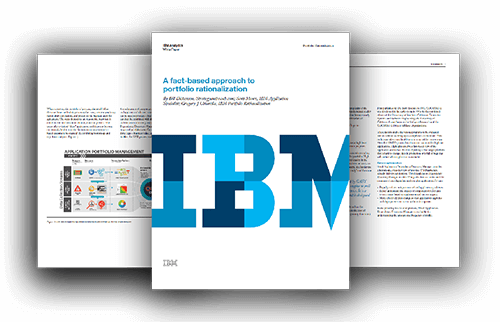Download: IBM "A Fact-Based Approach To Portfolio Rationalization"
IBM "A Fact-Based Approach To Portfolio Rationalization"

As companies grow through acquisitions and mergers, the applications that support these enterprises grow. Each application brings a set of business rules, business processes and technologies, many of which raise the cost of support. As these applications become more complex, the rate of change slows as a result. In a time when enterprises must be fast and flexible, IT becomes a barrier. The need to rationalize and reduce the duplicate business functionality continues to grow.
With this need, portfolio rationalization is at the top of the minds of many CIOs. The problem is that in many, if not most, application rationalizations, the underlying data is not objective. Instead, it is based on the perceptions of individual stakeholders. In many cases, the outcome is significant investments with minimal return and political gamesmanship on important business decisions. That the C-suite is hesitant to engage in the exercise is therefore understandable.
Application portfolio management (APM) programs tend to rely solely on user surveys, which provide useful data, but are analyzed unscientifically. How can the two sources of information be combined into one coherent view that reduces cost and improves flexibility.
Author: Michael Muller
Product Owner of Cloud-Based Software Analytics and Benchmarking solutions at CAST, Michael is a 15-year veteran in the software quality and measurement space. His areas of expertise include product management, application portfolio management and software quality measurement. As part of his scope, Michael manages CAST Highlight and Appmarq, and is part of the CAST Research Labs analysis team that generates the industry-renowned CRASH reports.